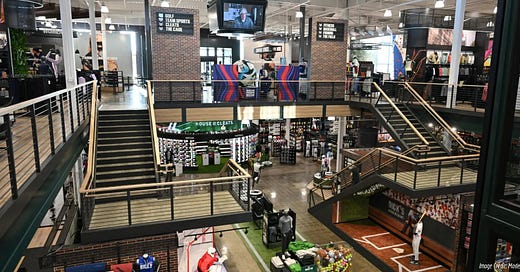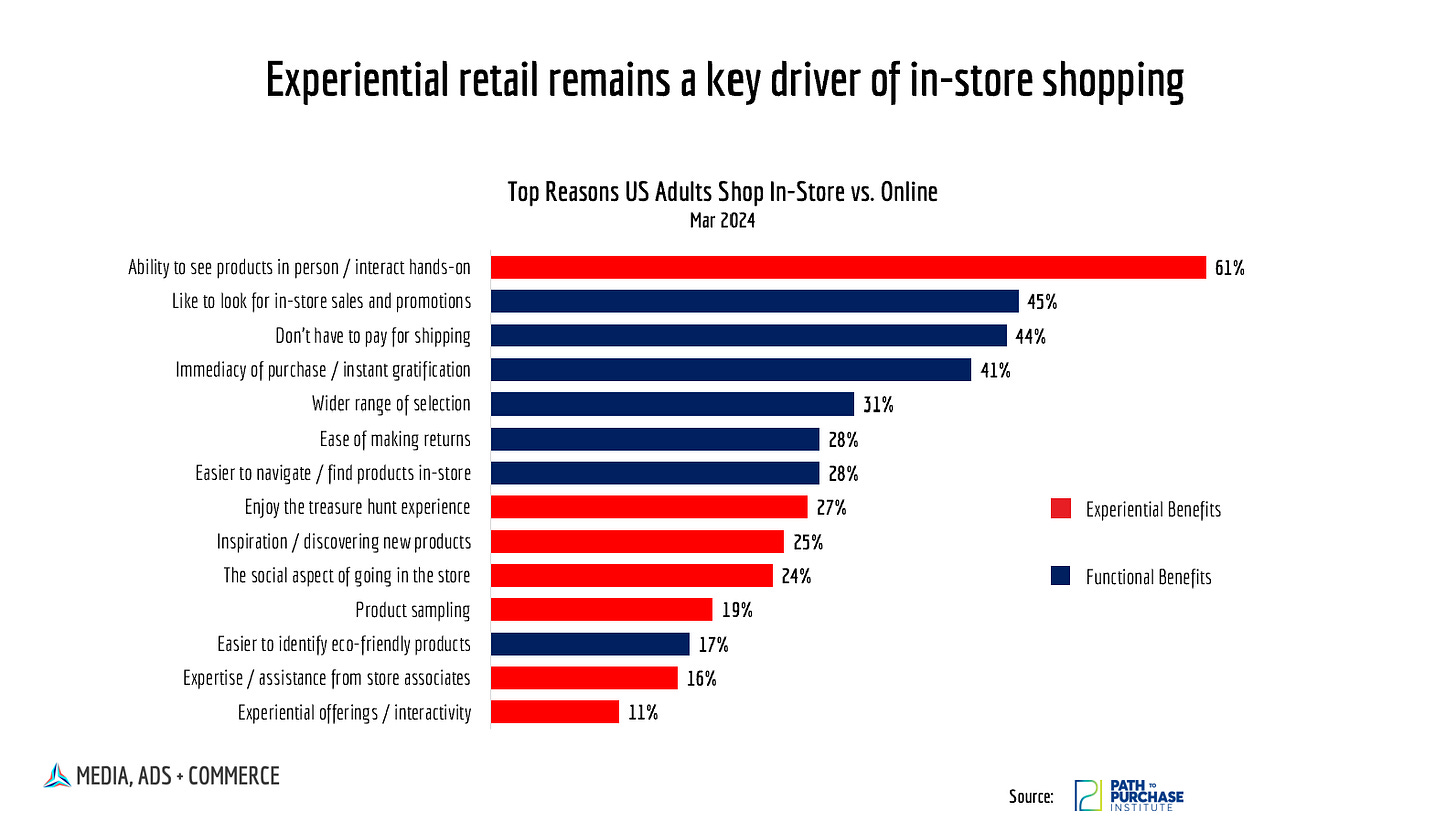“I regard the theatre as the greatest of all art forms, the most immediate way in which a human being can share with another the sense of what it is to be a human being.” - Oscar Wilde
As our lives become intermediated by little black mirrors, we’ve lost touch with the physical world. And with that a sense of communal experience.
Digital technology has disrupted how we gather (Facebook), what we watch (Netflix), and how we shop (Amazon). We used to live in a monoculture that aligned in both time and space. Now we mostly exist within our own continuum.
But the pendulum is beginning to swing back. If the recent surge in mall visits is any indication, there’s a growing desire to reconnect through shared experience.
Historically the theater has been the center of culture, the time and place where entire communities convened. Today, one of the few remaining strongholds of cultural connection—where people interact with each other in three dimensions—is physical retail.
Stores must now evolve, in part, to serve this purpose. And digitization will be central to this evolution of “physical retail as theater” because it enables stores to function as a stage, with the ability to change sets, introduce actors, and interact with the audience.
These developments simultaneously support merchants’ emerging retail media opportunities. Three recent RMN developments offer glimpses into the future of retail as theater.
The Digitization of the Store
Experiential retail is accelerating amid “the digitization of the store,” retail’s next megatrend. Dynamic and interactive digital experiences allow physical stores to constantly reinvent themselves, delivering a new a CX with every shopping trip. Going to the store becomes as much about the experiential benefits as the functional benefits, which are among the key reasons for shopping in person, according to the Path to Purchase Institute.
Experiential benefits that rank lower on this list today will inevitably ascend as consumers encounter them more often. Product discovery, sampling, and interactivity are all advanced by digitization’s richer palette for creativity. These efforts will naturally dovetail with the rise of in-store retail media. And they’ll revitalize the social aspects that have deteriorated as teenagers opt for their smartphones over the shopping mall.




